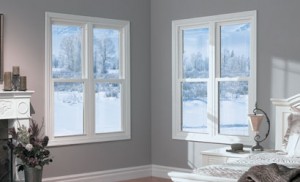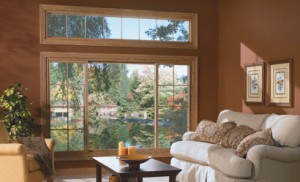
 Over 50 percent of windows purchased today are vinyl windows. Choosing a superior vinyl window can be difficult if you don’t know what to look for.It can prove even more frustrating if you purchase your vinyl windows and have them installed only to find that they’re poor quality, uneven and already fading in appearance.
Over 50 percent of windows purchased today are vinyl windows. Choosing a superior vinyl window can be difficult if you don’t know what to look for.It can prove even more frustrating if you purchase your vinyl windows and have them installed only to find that they’re poor quality, uneven and already fading in appearance.
There’s more to choosing and installing vinyl windows than meet the eye. What’s inside a window is more important than what’s on the outside since the internal structure determines a window’s longevity.
As a homeowner shopping for the best vinyl window, consider these factors in purchasing and making additional upgrades:
Vinyl: Look at a cutaway view of the window to identify the quality of the vinyl and the thickness of the window’s components. A thicker vinyl ensures rigidity and more overall resistance to weather damage.
Jambs: The vertical members of the window frame, thicker jambs provide better overall performance of the operating parts of the window called the “sash.” Building-grade windows have jambs from 2-7/16 to 3 inches thick, while premium grade windows offer 3-1/4 inch jambs.
Fusion-welded frames and sash: Maintaining a window’s square form helps ensure proper installation, in addition to creating a sharp look. Fusion-welded frames and sash can make a big difference here; windows that utilize a four-point welding system for the head, sill and two side jambs, and for the sash are sturdier and less likely to crack or break.
Chambers: These internal cavities within the frames and sash trap air, which insulates against heat and cold transfer through the window. Thick, multi-chambered frames and sash greatly improve structural performance by reducing the amount of seasonal expansion and contraction. Building-grade vinyl windows generally have two to three internal chambers whereas premium grades have five, six or seven chambers offering superior energy efficiency. These higher end windows will also have polyurethane insulation in their frames.
 Sloped sill: It’s not the thickness that matters here; instead, consider the degree of the slope of the window’s sill. Pockets seen on some vinyl brands will not keep water from collecting inside and outside of the window. A higher slope will allow for rainwater to hit the sash and flow downward, away from the window. This prevents water spots on the glass, and wear and tear on the vinyl.
Sloped sill: It’s not the thickness that matters here; instead, consider the degree of the slope of the window’s sill. Pockets seen on some vinyl brands will not keep water from collecting inside and outside of the window. A higher slope will allow for rainwater to hit the sash and flow downward, away from the window. This prevents water spots on the glass, and wear and tear on the vinyl.
Spacers: The material used to join two pieces of glass together to form a dual-pane (or insulated) window — a spacer’s material composition will affect air transfer. Aluminum spacers provide either a stuffy or chilly atmosphere depending on the season. Stainless steel and alloy spacers minimize the transfer of heat or cold through the window and minimize condensation on the windows, which is often caused by higher humidity levels in a home.
High performance glass: Vinyl windows, in general, are more energy efficient than wood windows. High performance glass gives homeowners even greater latitude to keep energy costs down. It also provides some of the best protection you can find against fading of home interiors caused by the sun’s rays.
More options are available in the vinyl window market. A window made up of thicker jambs, more internal chambers, and fusion-welded frames and sash ensures durability and performance for all seasons. High performance glass, warm-edge spacers and sloped sills will contribute to improved comfort and convenience in the home. If you can’t remember all that, just remember, you can’t judge a window by its cover.
